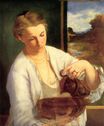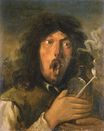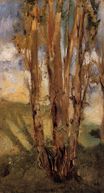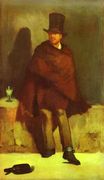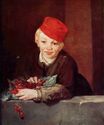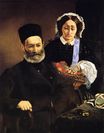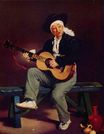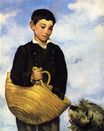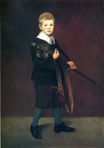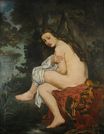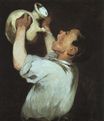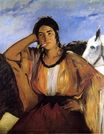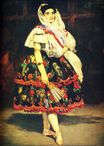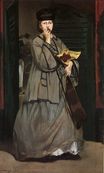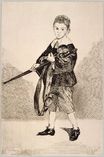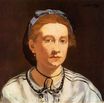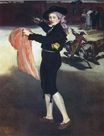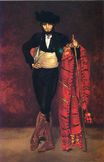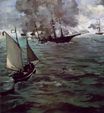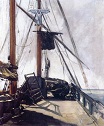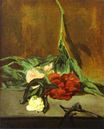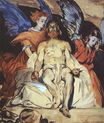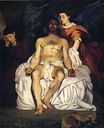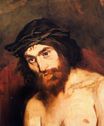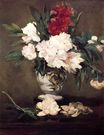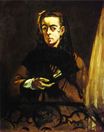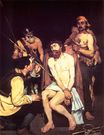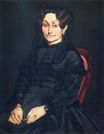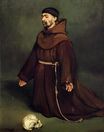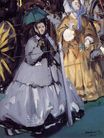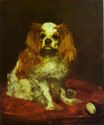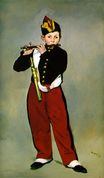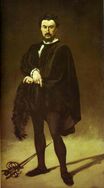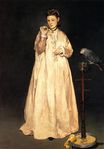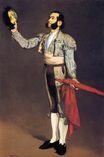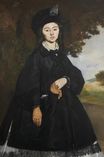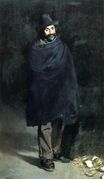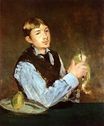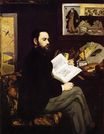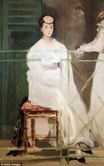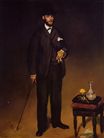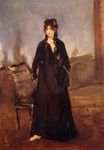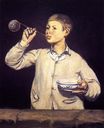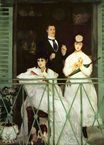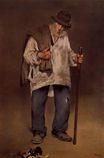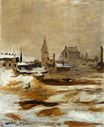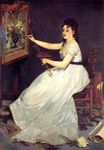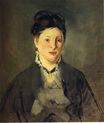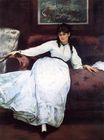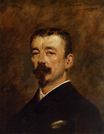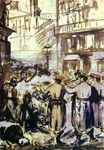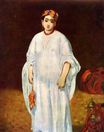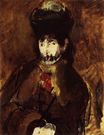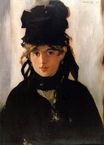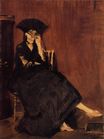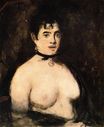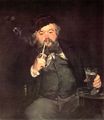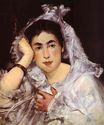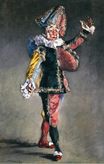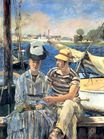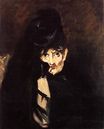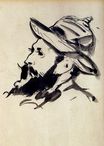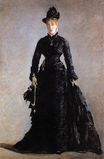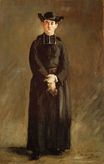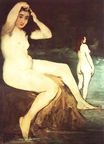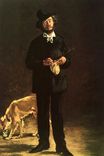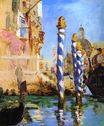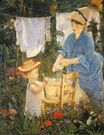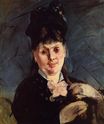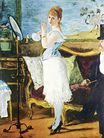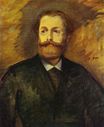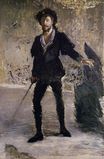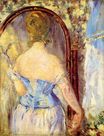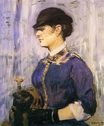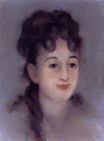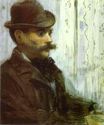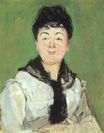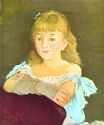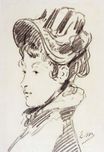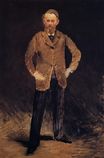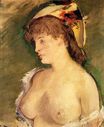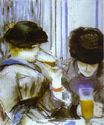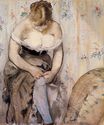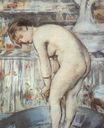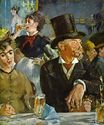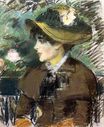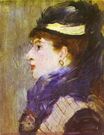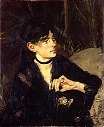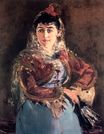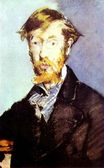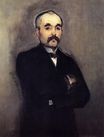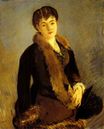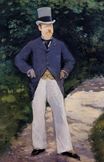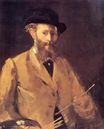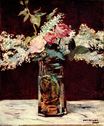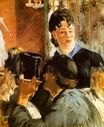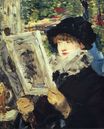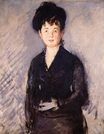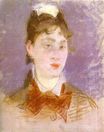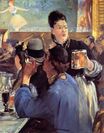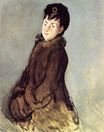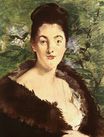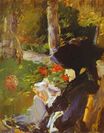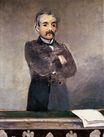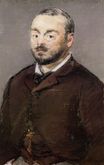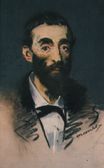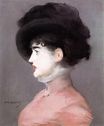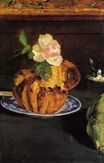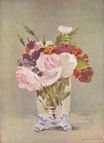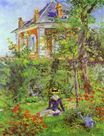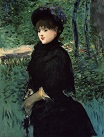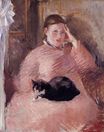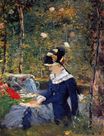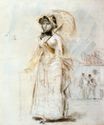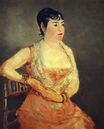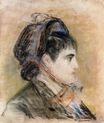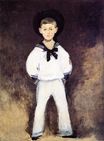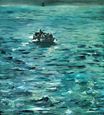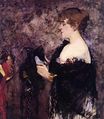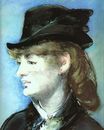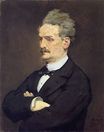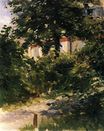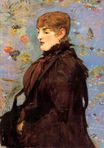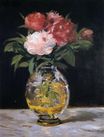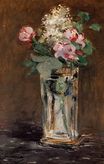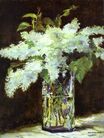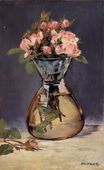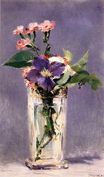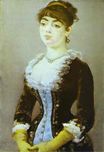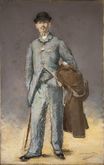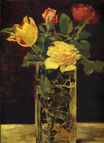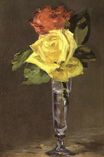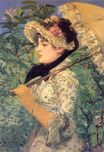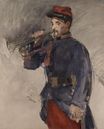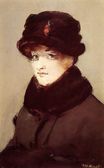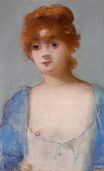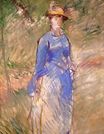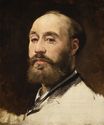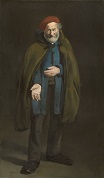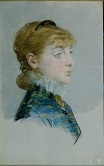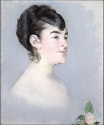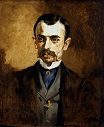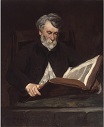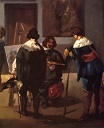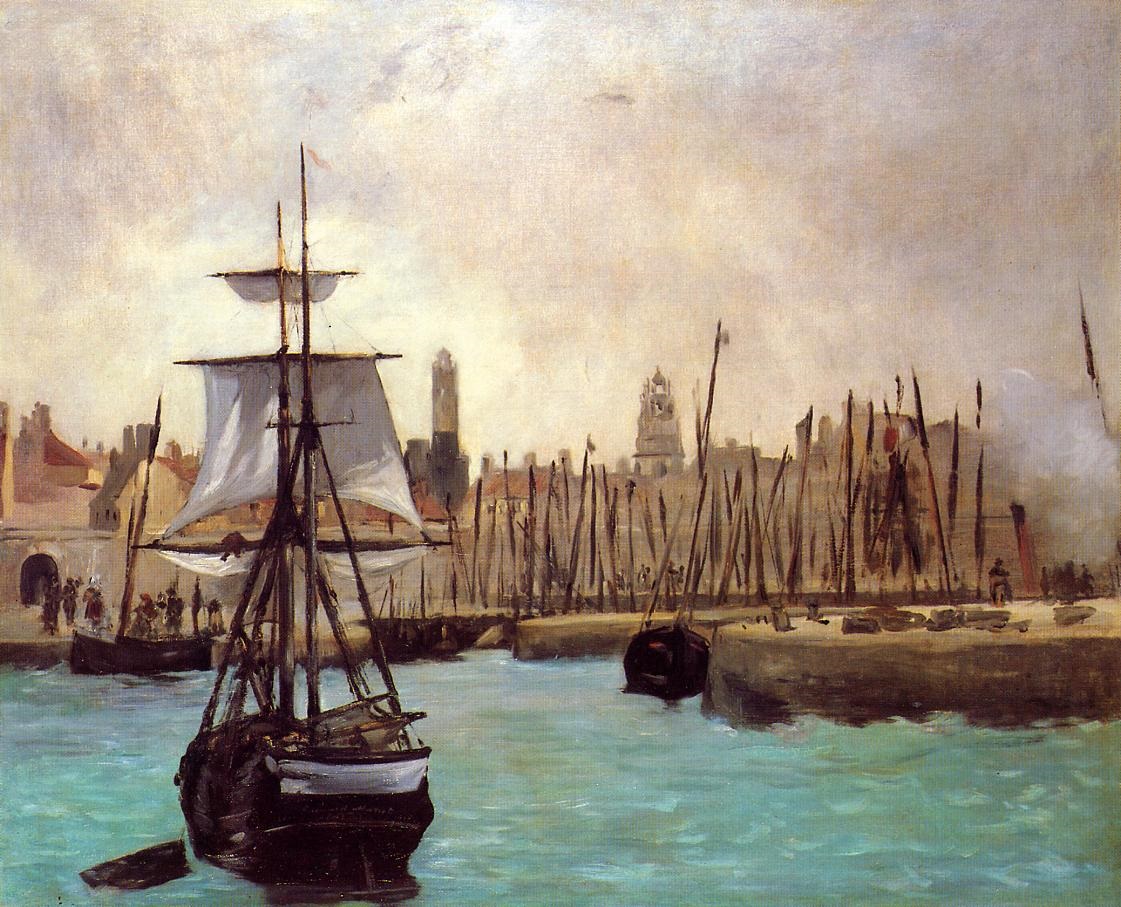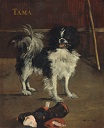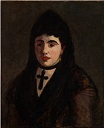Édouard Manet 1832-1883
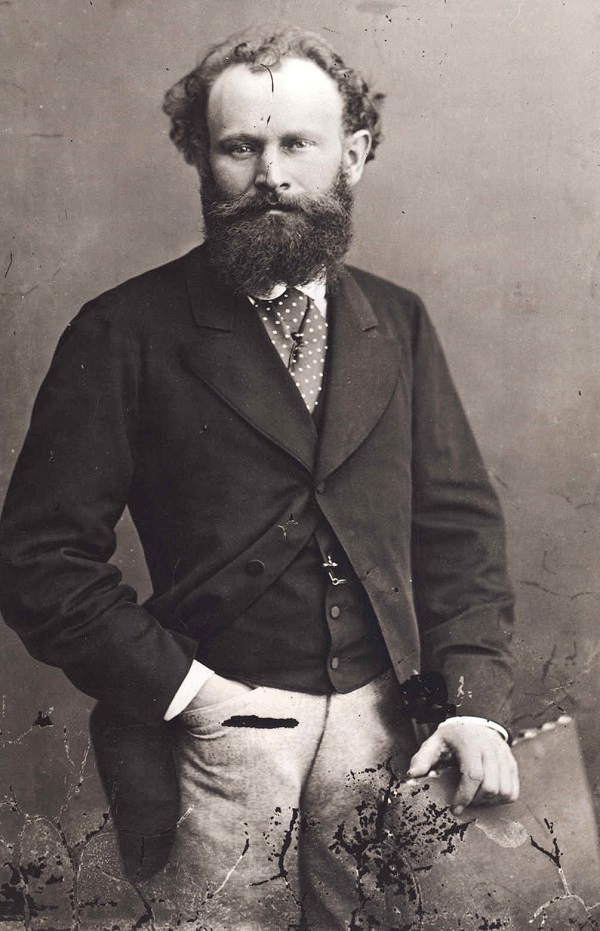
Édouard Manet, 1874
portrait by Nadar
Édouard Manet 23 January 1832 – 30 April 1883) was a French painter. He was one of the first 19th-century artists to paint modern life, and a pivotal figure in the transition from Realism to Impressionism.
Édouard Manet was born in Paris on 23 January 1832, in the ancestral hôtel particulier (mansion) on the rue des Petits Augustins (now rue Bonaparte) to an affluent and well-connected family. His mother, Eugénie-Desirée Fournier, was the daughter of a diplomat and goddaughter of the Swedish crown prince Charles Bernadotte, from whom the Swedish monarchs are descended. His father, Auguste Manet, was a French judge who expected Édouard to pursue a career in law. His uncle, Edmond Fournier, encouraged him to pursue painting and took young Manet to the Louvre. In 1841 he enrolled at secondary school, the Collège Rollin. In 1845, at the advice of his uncle, Manet enrolled in a special course of drawing where he met Antonin Proust, future Minister of Fine Arts and subsequent lifelong friend. At his father's suggestion, in 1848 he sailed on a training vessel to Rio de Janeiro. After he twice failed the examination to join the Navy, his father relented to his wishes to pursue an art education. From 1850 to 1856, Manet studied under the academic painter Thomas Couture. In his spare time, Manet copied the Old Masters in the Louvre. From 1853 to 1856, Manet visited Germany, Italy, and the Netherlands, during which time he was influenced by the Dutch painter Frans Hals, and the Spanish artists Diego Velázquez and Francisco José de Goya.
In 1856, Manet opened a studio. His style in this period was characterized by loose brush strokes, simplification of details and the suppression of transitional tones. Adopting the current style of realism initiated by Gustave Courbet, he painted The Absinthe Drinker (1858–59) and other contemporary subjects such as beggars, singers, Gypsies, people in cafés, and bullfights. After his early career, he rarely painted religious, mythological, or historical subjects; examples include his Christ Mocked, now in the Art Institute of Chicago, and Christ with Angels, in the Metropolitan Museum of Art, New York. Manet had two canvases accepted at the Salon in 1861.
A portrait of his mother and father, who at the time was paralysed and robbed of speech by a stroke, was ill received by critics. The other, The Spanish Singer, was admired by Theophile Gautier, and placed in a more conspicuous location as a result of its popularity with Salon-goers. Manet's work, which appeared "slightly slapdash" when compared with the meticulous style of so many other Salon paintings, intrigued some young artists. The Spanish Singer, painted in a "strange new fashion [-] caused many painters' eyes to open and their jaws to drop."
After the death of his father in 1862, Manet married Suzanne Leenhoff in 1863. Leenhoff was a Dutch-born piano teacher of Manet's age with whom he had been romantically involved for approximately ten years. Leenhoff initially had been employed by Manet's father, Auguste, to teach Manet and his younger brother piano. She also may have been Auguste's mistress. In 1852, Leenhoff gave birth, out of wedlock, to a son, Leon Koella Leenhoff. Manet painted his wife in The Reading, among other paintings.
He became friends with the Impressionists Edgar Degas, Claude Monet, Pierre-Auguste Renoir, Alfred Sisley, Paul Cézanne and Camille Pissarro through another painter, Berthe Morisot, who was a member of the group and drew him into their activities. The grand niece of the painter Jean-Honoré Fragonard, Morisot had her first painting accepted in the Salon de Paris in 1864, and she continued to show in the salon for the next ten years.
Manet became the friend and colleague of Berthe Morisot in 1868. She is credited with convincing Manet to attempt plein air painting, which she had been practicing since she was introduced to it by another friend of hers, Camille Corot. They had a reciprocating relationship and Manet incorporated some of her techniques into his paintings. In 1874, she became his sister-in-law when she married his brother, Eugène.
Unlike the core Impressionist group, Manet maintained that modern artists should seek to exhibit at the Paris Salon rather than abandon it in favor of independent exhibitions. Nevertheless, when Manet was excluded from the International Exhibition of 1867, he set up his own exhibition. His mother worried that he would waste all his inheritance on this project, which was enormously expensive. While the exhibition earned poor reviews from the major critics, it also provided his first contacts with several future Impressionist painters, including Degas.
Although his own work influenced and anticipated the Impressionist style, he resisted involvement in Impressionist exhibitions, partly because he did not wish to be seen as the representative of a group identity, and partly because he preferred to exhibit at the Salon. Eva Gonzalès, a daughter of the novelist Emmanuel Gonzalès, was his only formal student.
He was influenced by the Impressionists, especially Monet and Morisot. Their influence is seen in Manet's use of lighter colors: after the early 1870s he made less use of dark backgrounds but retained his distinctive use of black, uncharacteristic of Impressionist painting. He painted many outdoor (plein air) pieces, but always returned to what he considered the serious work of the studio.
Throughout his life, although resisted by art critics, Manet could number as his champions Émile Zola, who supported him publicly in the press, Stéphane Mallarmé, and Charles Baudelaire, who challenged him to depict life as it was. Manet, in turn, drew or painted each of them.
Manet depicted many scenes of the streets of Paris in his works. The Rue Mosnier Decked with Flags depicts red, white, and blue pennants covering buildings on either side of the street; another painting of the same title features a one-legged man walking with crutches. Again depicting the same street, but this time in a different context, is Rue Mosnier with Pavers, in which men repair the roadway while people and horses move past.
In his mid-forties Manet's health deteriorated, and he developed severe pain and partial paralysis in his legs. In 1879 he began receiving hydrotherapy treatments intended to improve what he believed was a circulatory problem, but in reality he was suffering from locomotor ataxia, a known side-effect of syphilis.
In his last years Manet painted many small-scale still lifes of fruits and vegetables, such as Bunch of Asparagus and The Lemon (both 1880). He completed his last major work, A Bar at the Folies-Bergère (Un Bar aux Folies-Bergère), in 1882 and it hung in the Salon that year. Afterwards he limited himself to small formats. His last paintings were of flowers in glass vases.
In April 1883, his left foot was amputated because of gangrene, and he died eleven days later in Paris. He is buried in the Passy Cemetery in the city.
From Wikipedia, the free encyclopedia



